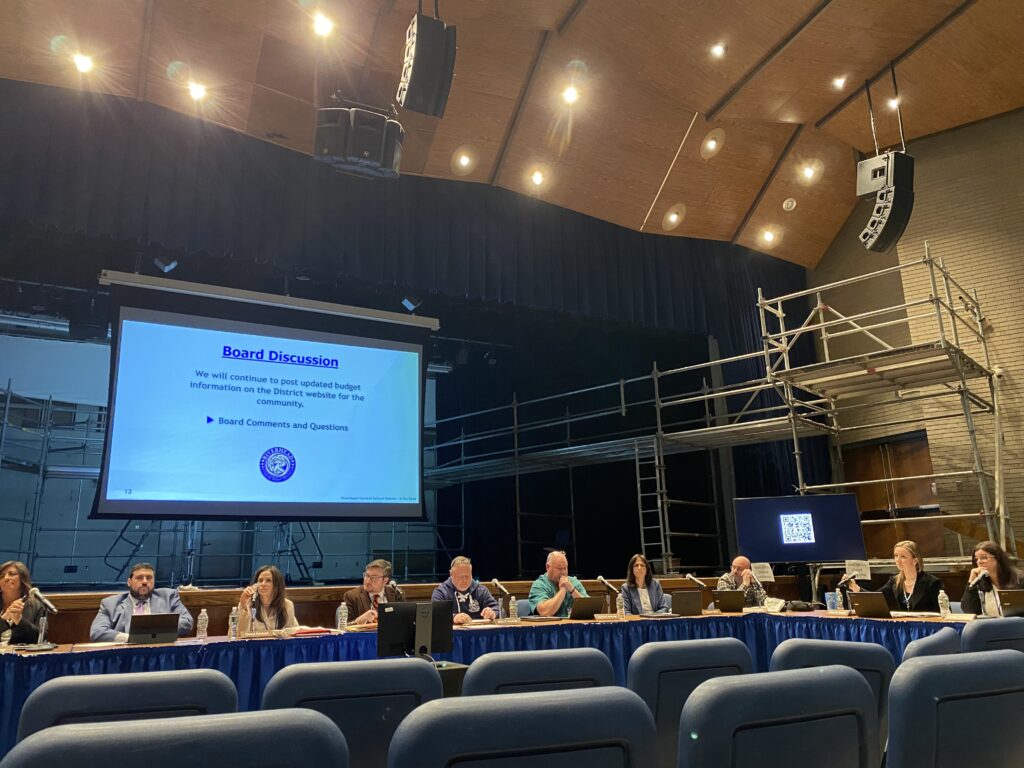Concerns raised at public hearing on size of proposed food waste facility in Calverton

A facility that converts food waste into energy, known as an anaerobic digester, could prove a key tool in combating the environmental issues caused by a growing food waste problem. But the size of a proposed facility in Calverton would go beyond what’s needed to serve Riverhead Town, several speakers said last Tuesday during a public hearing.
The Riverhead Town Board held the hearing on a code change to further clarify the definition of an anaerobic digester and to prohibit them in zoning districts that make up most of the Enterprise Park at Calverton.
A company called CEA Energy is seeking to build a facility at EPCAL that would convert food waste into energy, a proposal that remains before the town’s Zoning Board of Appeals for an interpretation of whether a recycling or solid waste management use is permitted at EPCAL’s Planned Industrial Park zoning district.
The ZBA, after holding several public hearings, appeared ready to issue a decision at its meeting last Thursday night. However, ZBA member Leroy Barnes, citing a request from the applicant, put a motion to delay the decision an additional two weeks. The ZBA voted in favor 4-0.
“It’s been looked at every which way that you could possibly look at this thing,” ZBA chairman Fred McLaughlin said prior to the vote. “I personally don’t think it belongs at this board. That’s one man’s opinion.”
The hearing two days earlier before the Town Board centered on adding a definition to the code that would describe an anaerobic digester as “any facility which accepts, treats or processes wastewater treatment sludges, biosolids, manure, food waste, fats, oils, greases, energy crops, glycerin, silage or any similar material for the purpose of producing biogas and digestate.”
Jefferson Murphree, the town’s planning and building administrator, recapped at the beginning of the hearing how he authored a denial letter March 4 to CEA Energy representative Vic Prusinowski. He wrote that he did not believe the food waste processing facility is a permitted use at EPCAL.
The decision pending before the ZBA follows an appeal of Mr. Murphree’s denial.
Mr. Murphree said he felt the type of facility was too close to the other prohibited uses such as garbage disposals, dumps and landfills.
Several speakers took issue with the proposed size of the facility, saying while they support the technology, the facility would require importing far too much waste from outside the town.
Mr. Prusinowski addressed the Town Board and said he believes the type of facility proposed belongs specifically in the PIP zoning district and nowhere else in town.
“That’s the proper place,” he said. “You have utilities, the rail spur, the gas is there, the transformers from the power company.”
He said he sees the proposal as a manufacturing facility and not as a transfer station. He said he also believed a special permit should be required “so the applicant would have to come in and prove our case that we comply with the town code and it’s in the best interests of the community.”
The facility would be located at 200 Scott Ave. in Calverton.
Mr. Prusinowski tried to address concerns about where food waste would be coming from and said the facility would not be bringing in waste from New York City. He said the waste would be generated within a 25-mile radius. A New York law requires all businesses and food purveyors to send their organic waste to an operational digester if they’re located within that 25-mile radius, he said.
“Right off the bat, our primary market will be a 25-mile radius around the digester,” he said.
He said building a digester on a smaller size that can handle 10-20 tons per day would not be economically viable and instead would need to be municipally operated. The proposed facility at EPCAL would handle 250 tons per day. Mr. Prusinowski said the rail spur at EPCAL would be used mostly to export the byproducts generated.
Several other speaks addressed the board on the topic. Toqui Terchun, speaking on behalf of several members of the Greater Calverton Civic Association, said they believe anaerobic digesters can help reduce taxes, help improve overall health of soil and reduce carbon emissions.
She said Riverhead Town creates around 12 tons of food waste of day and said the members could understand limiting larger facilities that would be processing food waste far beyond what the town is producing. She said a facility capable of handling around 20 tons per day would be appropriate.
“We don’t expect an anaerobic digester to be the near-term answer to the problem as there is still much to be learned from other communities which are already using this technology,” she said. “But we expect ADs to have a positive impact on one of the long-term solutions to the food waste problem.”
Barbara Blass of Jamesport, a former councilwoman, said she supports the prohibition of digesters of the size proposed in the project that would require waste imported from outside the town. She said if the board were to allow larger facilities, a community benefit agreement should be included. Mr. Prusinowski said he agreed that the community should receive a benefit beyond the property taxes generated.
Mark Haubner of Aquebogue, speaking on behalf of the town’s environmental advisory committee, outlined some information on anaerobic digestion, and said the facilities produce renewable natural gas that is piped into an already established natural gas grid.
“Our committee welcomes the chance to continue working with the Town Board and other departments to take advantage of sensible and scientific approaches to our solid waste issue,” he said.
Supervisor Yvette Aguiar suggested bringing the topic up once more at a work session for further discussion.








